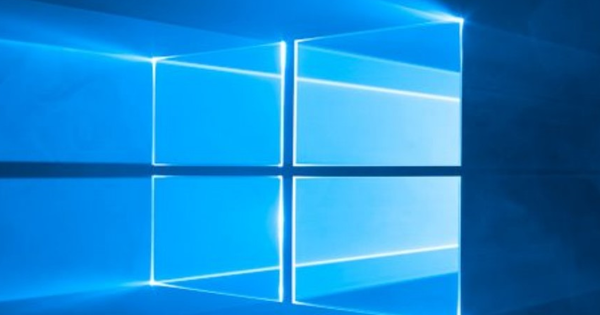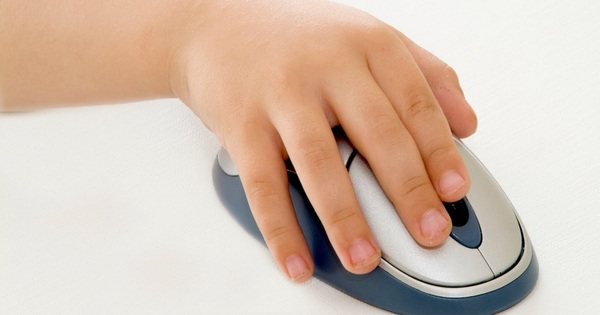When you buy a new computer, the desktop is wonderfully empty. Often, however, it doesn't take long before it becomes a mess of all kinds of icons and shortcuts. With the help of the Nimi Places program, we will clean up the desktop and then organize it conveniently.
Like most everyone else, you put files on the desktop and forget to clean them up. In addition, you want to consciously keep shortcuts of folders or applications that you need regularly within clickable reach. In this way a desktop develops into a mess that you gradually start to feel ashamed of.
Nimi Places is a useful program to organize your desktop in so-called containers, while you can quickly access your favorite tools, applications and files. It is comparable to the Fences app, with the difference that Nimi Places is free and that you can configure this tool to a large extent; we are not only talking about the appearance of the containers, but also about how they behave.
Unfortunately, there are still some loose ends in this software in combination with Windows 10. Nimi Places does not work intuitively and can occasionally crash, but fortunately you will not lose any data. If the benefits of a clean interface and a free organizer outweigh the occasional errors, this is something for you to try.
Download and install Nimi Places
Downloading and installing is quite cumbersome. Surf to the aforementioned webpage where you can download Nimi Places. There you use the big blue Download button. This will take you to a new page where you have to type a captcha protection so that a new Download button appears.
When you click on that, you will see a gray area that counts down ten seconds before the Extract Nimi Places (portable).exe file goes to your hard drive. Then double click on the exe file. Windows Defender will warn you that you want to download an unknown app. Ignore the warning and click More information so that in the next window you have the button Run anyway can click.

This will open the window Unpack Nimi Places. The setup tool suggests installing the package in the default location, which is in the folder Program Files. Sounds good, but in practice this keeps giving us an error message. It is better to click on the button with the three dots. Then you navigate to a location on the hard drive, for example your user folder. There you create a new folder that you name Nimi Places (C:\Users\yourusername\Nimi Places) gives.
Click OK to return to the initial setup screen where you click the Unpack and launch clicks. If you receive the warning “Requested Nimi Places extraction path is invalid”, you need to click Unpack and launch again and normally it should be OK.
Dive deeper into Windows 10 and take control of the operating system with our Tech Academy. Check the Windows 10 Management online course or go for the Windows 10 Management bundle including technique and practice book.
Working with containers
You can store all your desktop icons and shortcuts in so-called containers, with the exception of the Recycle Bin. You cannot remove it from your desktop. In addition, it is possible to put together containers of folders, applications and files that you would like to reach quickly, so that you no longer have to dig in the Start menu or in Windows Explorer.
Nimi Places proposes a number of templates to start with. That way you get up to speed faster. Obviously you want to remove and add containers. In the system tray click on the icon of Nimi Places. In this example there are four containers: Documents, Downloads, Applications and games. Suppose you want to remove the Games container, then click the Nimi Places icon in the System Tray and choose Remove.

To place a new container, use the plus sign in this window and then click on place to select a folder. In principle it is possible to show every folder as a container. Suppose you have the map Pictures want to place all its subfolders as a container on the desktop, then navigate via place to this folder and click OK.
If you save various shortcuts of certain websites that you often need, then you drag these links into a folder that you can name, for example Websites gives. Then drag that folder to a location on the hard drive, such as the folder Documents. Then you add the Websites folder to Nimi Places so that this container is also accessible from now on. You can drag items from one container to another.

Each container can contain a folder location or a reference to files. The size of each container is adjustable and you can drag the containers to another place on the desktop via the title bar. Right-click on such a container, then you can change the style, appearance and name. In addition, you can place new folders in the container. By the way, you can scroll in such a container to see the subfolders and their contents.
Customize display
In the display modes you indicate where and when you want to see each container. To access this Container Display, go to the system tray and there you open Nimi Places. Here you get an overview of all containers that you have already created. Click on the container in this list whose display mode you want to change. Then click on the small display symbol at the bottom of this list. It looks like a screen with a clock in it.
Suppose you prefer the container games is not visible at work, check the option work from. Or that the same container only wants to see between 20:00 and 24:00. In that case, check the option Hourly schedule and then drag the gray box so that it covers the period when this container is allowed to appear on the desktop. That way you can set a time schedule for each container.
In addition, right-click a container to adjust its appearance and visibility. Through Appearance, Visibility, Visible while desktop is focused make sure the container is automatically hidden when you start working in a particular program. However, if you go back to the desktop, the container will appear automatically. The default option is Always visible set.

The way in which you arrange the appearance of the containers is useful. To do this, right-click on such a container so that you go to the command View comes. Initially the icons are quite large, but you can also use them Medium icons, Small icons and Tiny icons Set up. You have to do this for each container separately. You can change the size of such a container by clicking and dragging a corner.
If you easily remember which containers are involved, you can possibly save space by hiding the name of the container. Again you do that with the right mouse button Appearance, Title, Visible. This is also where you can place the title bar at the bottom: Place on bottom and where you rename the container: Rename. You also determine the looks of each container via so-called Themes, can be found via Appearance, Theme. This not only changes the appearance of the title bar, but also the transparency, color, and brightness of the container.

Other tips
You can label the items that you have placed in containers. These labels are useful for organizing files and folders. To do this, right-click on an item and select Label. There you have seven options available: None, Important, ToDo, Work, Private, Check Later and leisure. It is the name of the item that will take the color of label. Unfortunately, we did not find a way to add your own labels.
Via the Settings in the System Tray it is still possible to provide containers with action rules. This is how you can go for the container Assignments select the action to be performed on the files or folders that will be placed in the container. There are three types of actions: move, duplicate or link to another location. After all, with every action you indicate the source and destination folder.
Because containers can contain many folders, you can smoothly scroll through the contents with a mouse movement, via the keyboard or the mouse wheel. When you start typing in a selected container, it will automatically scroll to an element that starts with these letters.
Finally, you can organize files and folders according to different criteria. You can sort them by name, extension, label, size, frequent use, modification date and more so that such a container doesn't become the same mess your desktop once was.

